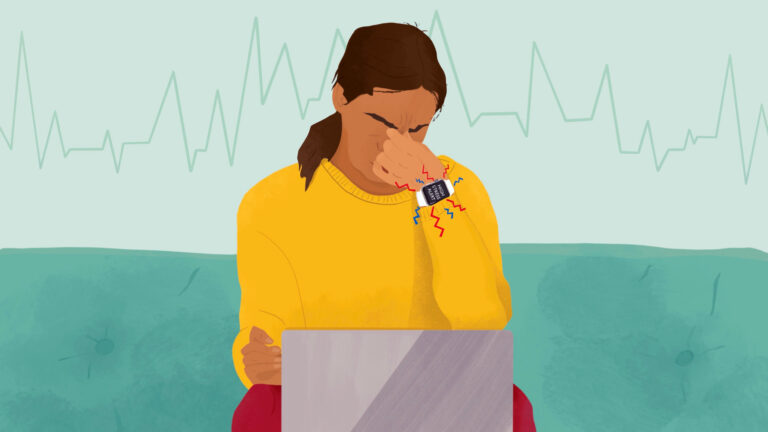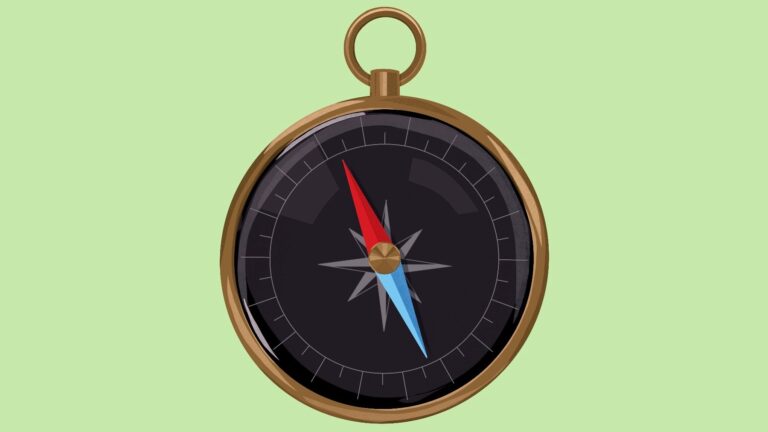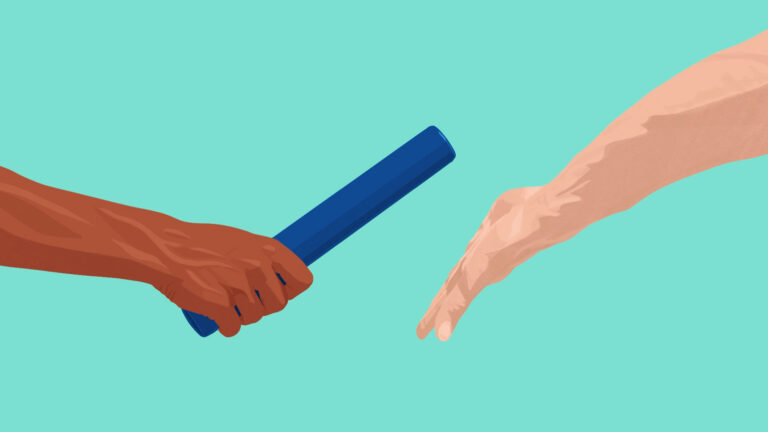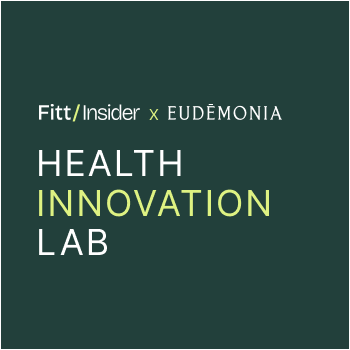Sleep is a pillar of good health. But for many, restful shut-eye is merely a dream.
Up All Night
A tenant of hustle culture, pulling an all-nighter was once a badge of honor. But now, as the high-performance lifestyle takes hold, adequate sleep is a nonnegotiable.
Still, acknowledging the importance of sleep and optimizing it are separate issues. In reality, most people are just trying to get by.
- One-third of US adults don’t get enough sleep.
- More than 70M Americans have a sleep disorder.
- 30% of US adults experience short-term insomnia.
Making matters worse, pandemic-era lockdowns and infections disrupted sleep patterns, giving rise to “coronasomnia.”
- 56% of people reported an increase in sleep disturbances during the pandemic.
- To cope, 51% of US adults used medication, supplements, or other substances to help them fall asleep.
All told, a lack of sleep has been linked to a higher risk of chronic illnesses like heart disease, type 2 diabetes, and obesity, while more recent studies reveal ties to Alzheimer’s and dementia.
The Sleep Economy
Championing sleep, brands are cashing in on bedtime.
With 80% of adults wanting to improve sleep, the global market for slumber-inducing aids and accessories is massive, topping $585B by 2024.
Gaining for years, the sleep economy includes three main categories and three (going on four) key phases.
Categories. Products typically fall into ambience optimization (bedding, lighting, and temperature), routine modification (like sleep monitors or meditation apps), and therapeutic treatment (like pills and sleep apnea devices).
Phases. Meanwhile, as consumer awareness increases, solutions are evolving from traditional sleep clinics and prescriptions to DTC brands emphasizing sleep hygiene (à la Casper) and, more recently, sleep trackers and health data.
Looking at the rise of sleep tech, startups in the space attracted more than $2.4B in funding between 2019 and early 2022, per Pitchbook.
Quantified sleep. A 2021 Deloitte study found that 39% of respondents wear a smartwatch. While steps and workouts are the most commonly tracked metrics, sleep is on the upswing — with 35% of users monitoring quality and duration.
Tracking sleep with a watch, strap, or ring doesn’t guarantee sweet dreams, though. In some cases, the exact opposite is true.
Compared to brain wave-sensing polysomnography tests (the gold standard for diagnosing sleep disorders), consumer wearables accurately identify sleep versus wakefulness about 78% of the time. When estimating time to fall asleep, accuracy drops to about 38%.
A common complaint, many users say the devices don’t actually help them sleep more or tell them how to. Instead, the data states the obvious: mainly that they aren’t sleeping enough.
The nightmare scenario, obsessing over sleep stats leads to a condition known as orthosomnia, a cycle that often leads to even worse shut-eye.
Next-Gen Solutions
Like the doctor’s office and the gym, sleep clinics are being unbundled, increasing access to costly and inconvenient services.
Ther-appy. A common and effective treatment for sleeplessness, cognitive behavioral therapy for insomnia (CBT-I) is a structured program to identify and replace problematic behaviors with habits that promote sound sleep.
Often provided by a doctor or counselor, digital options are bringing CBT-I to the masses.
With FDA backing, Pear Therapeutics has developed a prescription app to treat chronic insomnia. And Big Health recently received a nod from Britain’s National Health Service for its digital insomnia treatment Sleepio.
Earlier this year, Dawn Health landed $1.8M in pre-seed funding for its CBT-I app. Elsewhere, offering a variety of tests and therapies, Deep and Empower Sleep are simplifying sleep care, while Crescent Health focuses on one-on-one sleep coaching.
Devices. Going beyond sleep monitoring, wearable makers want to diagnose and treat sleep disorders.
Last year, X-trodes closed a $4.5M seed round for wireless “Smart Skin” sleep sensors. Back in January, Earable landed $6.6M to improve sleep using its brain-stimulating headband. Then, in May, StimScience added $8.3M for its electrical stimulation headband called Somnee.
Meanwhile, Wesper (formerly known as Thatch) recently received FDA clearance for its at-home sleep apnea diagnostic. The same goes for Onera, makers of at-home or in-lab sleep tests.
Another approach, Somnox recently launched its stress-relieving sleep robot in the US. And the US Defense Research Projects Agency (DARPA) is funding a $33M project to reprogram the body’s circadian clock using an implantable device.
Elite Sleep
Entering a fourth phase of the sleep economy, scientists are decoding sleep genes while startups optimize time under the covers.
Starting with a smart mattress, Eight Sleep envisions a world where its tech compresses sleep time to under six hours. The company is also working on body scanning technology to detect illnesses while users sleep.
In the pipeline, researchers at UCSF have discovered two genetic mutations that let some people sleep far less than average but feel fully rested. Developing a drug to replicate the effects of these mutations, the experts see a future where they’re able to improve almost every aspect of human health.
Looking ahead: Describing so-called “elite sleepers,” neurologist Louis Ptáček, one the study’s senior authors, said sleep science could become the next frontier of precision medicine:
“There’s a dogma in the field that everyone needs eight hours of sleep, but our work to date confirms that the amount of sleep people need differs based on genetics.”
🌎 A Fitter Planet
In-person exercise is back, but it’s far from business as usual.
On the Fitt Insider Podcast: Les Mills International CEO Clive Ormerod discusses why community-driven group classes are still the pinnacle of fitness.
We also cover: the company’s 50-year legacy, its new VR boxing game, and its mission to build a fitter planet.
Listen to today’s episode here
🛠 Outsourced
Peloton will stop making its own fitness equipment.
The latest development in an ongoing turnaround effort, the company plans to fully outsource manufacturing to cut costs and simplify its supply chain.
Hands off. Wanting to control every aspect of the experience, Peloton founder John Foley sought to vertically integrate content production, manufacturing… you name it. But, as the connected fitness company’s rough ride continues, its new CEO Barry McCarthy is off-loading equipment.
In a press release, Peloton said it’s “exiting all owned manufacturing” and will rely entirely on partners to make its hardware.
- The move will eliminate about 570 positions at Tonic Fitness Technology, a Taiwanese manufacturer acquired by Peloton in 2019.
- Earlier this year, Peloton canceled plans to build a $400M manufacturing plant in Northwest Ohio.
Righting the bike. Having misjudged demand for its home workout products, Peloton has changed out chief executives, cut 2,800 jobs, toyed with its pricing, and borrowed $750M as losses mount.
TBD. Down nearly 95% from its peak and 75% this year, Peloton’s stock rose on the news. But, when and how the company gets back on course remains a work in progress.
🥩 Bye-bye Beef
Beyond Meat is preparing to launch plant-based steak later this year.
Alt-steak. Unlike its existing lineup of meat-mimicking options that replicate ground or processed cuts, the company’s pseudo steak aims to recreate a whole slab of meat.
Debuting in retail stores before hitting restaurants, the company hopes its fake steak provides a much-needed boost.
Cash cow. Championing environmental and social change, Beyond revolutionized veggie burgers, creating patties that look and taste like the real thing. Hitting the public market in May of 2019, the company’s value jumped from $3.9B at its debut to $13B by that July.
Money pit. With a market cap of $2B, Beyond’s shares have fallen about 85% in the past 12 months. This May, it posted a $100.5M loss. Worse, plant-based meat sales have sputtered as of late.
- Fake meat options account for less than 1% of all meat consumed in the US.
- After rising 200% in 2020, US retail sales of plant-based meat were flat last year.
- On a per-pound basis, plant-based meat is double the price of animal-based meat.
On the bright side. Demand for animal-free foods is growing, even as fake meat falters. In 2021, US consumers spent $7.4B on plant-based foods, up 6% YoY and a 54% increase from three years earlier.
Hurdles ahead. Bringing prices down and cracking the code on repeat purchases, plant-based meat brands have their work cut out for them. Another issue, in terms of nutritional benefits, plant-based doesn’t mean healthy.
Staying the course. According to Beyond Meat CEO Ethan Brown, the mission remains unchanged: make meat-free products tasty and affordable enough that consumers actually want to eat them.
🛶 Erg Economics
Hydrow unveiled a smaller, cheaper version of its at-home rowing machine.
What it is: 30% lighter and $1,000 cheaper, the Hydrow Wave aims to address at-home equipment’s biggest pain points: space and affordability.
For context: Hydrow is facing pressure as demand for at-home exercise slows while competition in connected rowing heats up.
Joining the Fitt Insider Podcast earlier this year, Hydrow CEO Bruce Smith suggested that rowing wasn’t suffering the same fate as stationary cycling, attributing its growing popularity to an erg’s time-saving factor — a workout uses 86% of the muscles in the body and typically only lasts 20 minutes.
As Peloton hypes up its forthcoming rower, the rowing wars have intensified across connected fitness and IRL exercise. Digging in, Hydrow recently secured $55M to boost marketing efforts and fend off rivals.
Still, owning a $2,000 erg isn’t a reality for everyone.
Downmarket. In a conversation with Fitt Insider, Liteboxer CEO Jeff Morin said connected equipment is saturated, but the lower end of the market remains untapped.
Taking notice, companies have hustled downmarket, developing smaller, less-expensive, and equipment-free choices to reach a wider audience.
Looking ahead: Trading freight delivery for overnight shipping, Hydrow hopes its new downsized option opens the door to its subscription content + hardware ecosystem.
📰 News & Notes
- On debuts recyclable sneaker subscription.
- Gymshark opens mental health-focused barbershop.
- Fitt Jobs: Discover your dream career in health & fitness.
- Better-for-you sports drink BioSteel inks NHL partnership.
- Apple Watch faces import ban for ECG feature infringement.
- ACSM names “fittest cities,” finds 22.4% of adults are inactive.
- Digital health investments are down YoY but still outpacing 2020.
- Executive Q&A: FORTË CEO Lauren Foundos on evolving IRL exercise.
💰 Money Moves
- YuLife, a life insurance company with a gamified approach to improving wellness, landed a $120M Series C at a $800M valuation.
- Connected equipment maker Echelon Fitness received an undisclosed credit facility from MidCap Financial.
- Wonderbelly, a better-ingredient antacid, secured $3.38M in a seed round co-led by SLOW, Brand Project, and Elizabeth Street.
- Eating disorder care platform Arise added $4M in an oversubscribed seed round co-led by BBG Ventures and Greycroft.
- Canopie, a mental resilience platform for post-partum mothers, received an undisclosed investment from Virginia Venture Partners.
- Digital health coaching app Holly Health raised £1.4M ($1.6M) from Kima Ventures, Very Serious Ventures, and others.
- MAOLAC, creators of functional milk products for gut health and physical performance, raised $3.2M in seed funding.
- Moving Analytics, creators of a digital platform for cardiac rehab and lifestyle intervention, secured $20M in a Series A round.
- Finland-based Hintsa Performance, a holistic coaching app for high-performers, raised €5.1M ($5.12M) in new funding.
- Singapore-based B2B mental health platform Intellect added $10M in a Series A extension led by Tiger Global.
- Posterity Health, a digital male fertility startup, grabbed $6M in a seed round led by Distributed Ventures.
- Brightline, a digital behavioral health platform for children, raised $10M in a Series C extension led by Northwell Health.
Today’s newsletter was brought to you by Anthony Vennare, Joe Vennare, and Ryan Deer.






